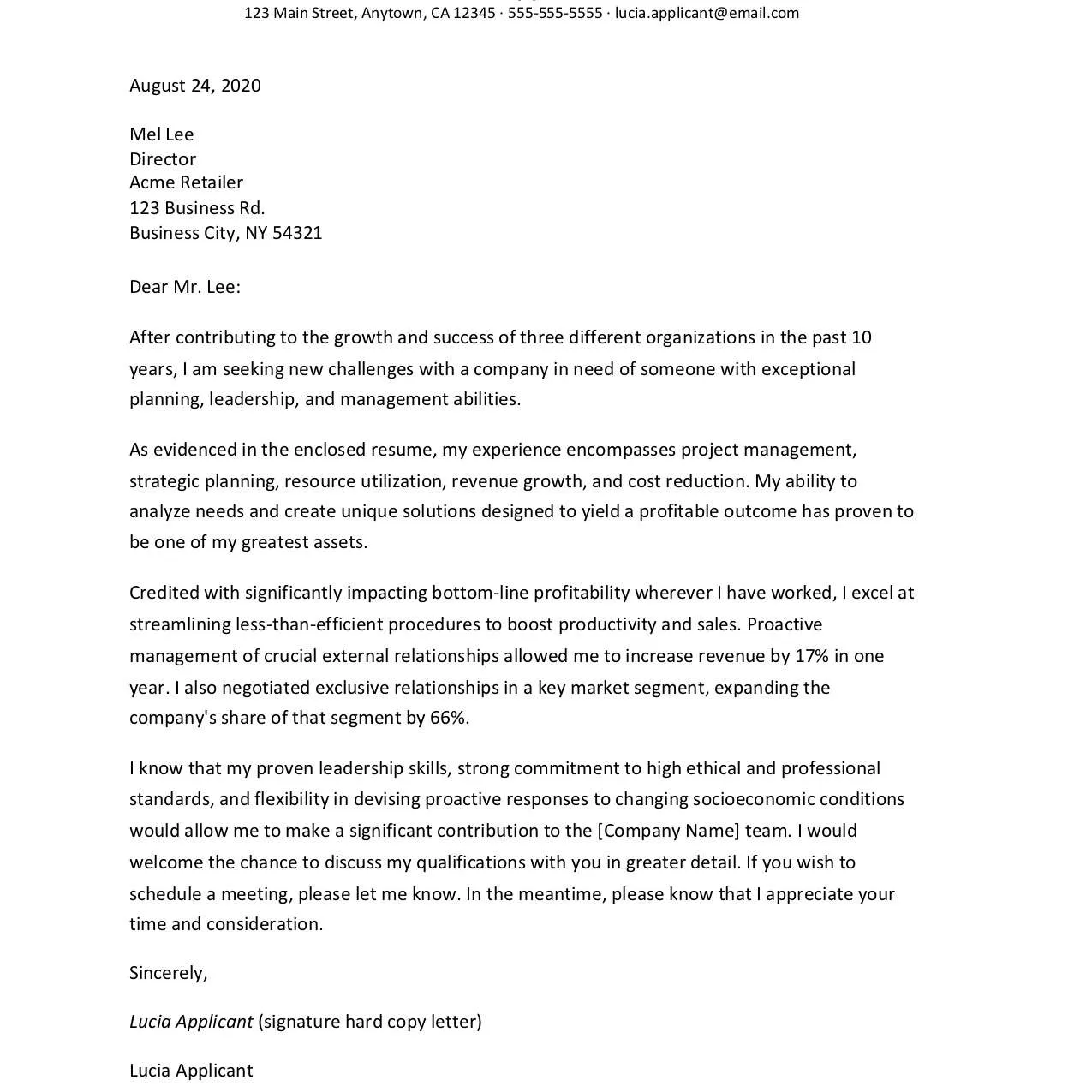Why a Cover Letter is Crucial for Leadership Development Programs
A well-crafted cover letter is your first chance to make a strong impression on the selection committee of a leadership development program. It goes beyond the basic information in your resume, allowing you to express your personality, motivations, and suitability for the program. Unlike a resume, which provides a snapshot of your experience, a cover letter offers an opportunity to tell your story and articulate why you are the ideal candidate. It’s your chance to demonstrate your passion for leadership, your understanding of the program’s goals, and how your skills and experiences align with their objectives. In essence, it bridges the gap between your qualifications and the program’s needs, making your application more compelling and increasing your chances of acceptance. Failing to submit a well-written cover letter, or submitting a generic one, can significantly diminish your chances of being selected, as it signals a lack of genuine interest or effort.
Highlighting Your Leadership Skills in Your Cover Letter
Your cover letter should be a showcase of your leadership capabilities. This involves more than just listing past titles or responsibilities. It means articulating your leadership style, highlighting your ability to inspire and motivate others, and providing concrete examples of your successes. Think about the specific leadership skills the program values, such as communication, problem-solving, strategic thinking, and team management. Then, craft compelling narratives that demonstrate how you have utilized these skills in past roles or situations. Use action verbs to describe your accomplishments and quantify your achievements whenever possible. For example, instead of saying “Led a team,” state “Led a team of 10 to successfully complete a project, resulting in a 15% increase in efficiency.” This level of detail provides tangible evidence of your leadership potential.
Showcasing Relevant Experience
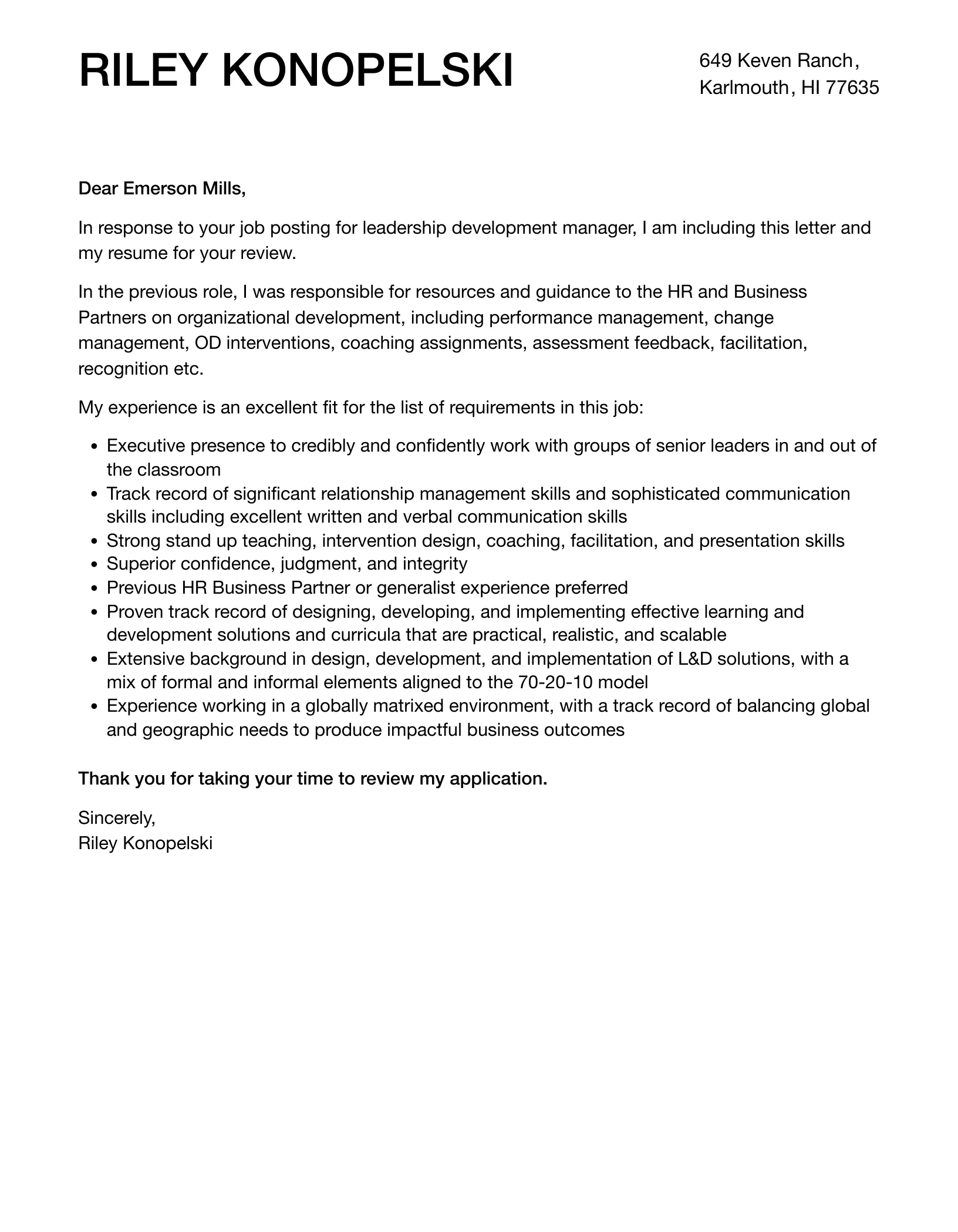
When describing your relevant experience, focus on the leadership roles you’ve held and the responsibilities you’ve undertaken. Highlight situations where you took initiative, made decisions, and influenced others. Describe projects or initiatives where you played a key role in driving success. Even if your experience isn’t directly in a formal leadership position, you can still showcase your leadership skills through examples of how you took charge, mentored colleagues, or spearheaded initiatives. The key is to choose experiences that align with the program’s focus and demonstrate your potential to thrive in a leadership role.
Quantifying Achievements
Quantifying your achievements is crucial for demonstrating the impact of your leadership. Use numbers, percentages, and data to illustrate the positive outcomes you’ve achieved. For instance, if you improved team performance, state the percentage increase in productivity or the reduction in errors. If you implemented a new strategy, quantify the resulting cost savings or revenue growth. Quantifiable results make your accomplishments more credible and provide tangible evidence of your leadership effectiveness. This approach not only showcases your skills but also demonstrates your ability to deliver results and make a significant contribution to any organization.
Tailoring Your Cover Letter to the Program
A generic cover letter is a surefire way to be overlooked. Instead, tailor your letter to the specific program you’re applying for. This requires careful research and a deep understanding of the program’s goals, values, and target audience. Demonstrate that you’ve taken the time to learn about the program and articulate how your aspirations align with its objectives. The more you can personalize your letter to reflect your genuine interest in the program and your understanding of its mission, the more likely you are to capture the attention of the selection committee.
Researching the Program and Institution
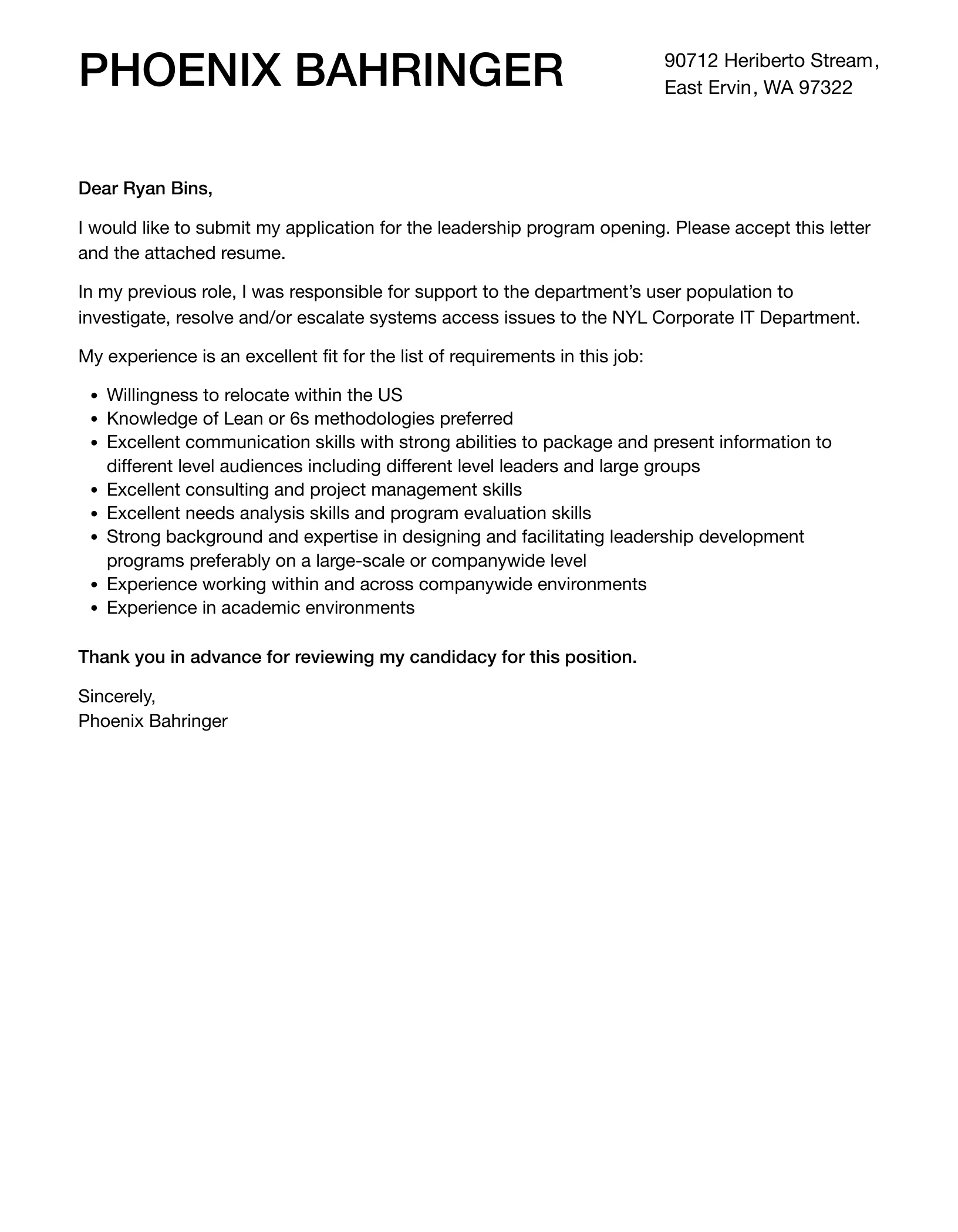
Before writing your cover letter, thoroughly research the leadership development program and the institution offering it. Explore their website, read testimonials from past participants, and understand their mission, values, and program objectives. Identify the key skills and qualities they are looking for in candidates. This research will enable you to tailor your cover letter to specifically address these points and show that you understand what the program is all about. This demonstrates initiative, interest, and a commitment to excellence. It also helps you to identify the specific elements to highlight in your own experience that resonate with the program’s requirements.
Understanding Program Values and Goals
Understand the values and goals of the leadership development program. Is it focused on innovation, community service, global leadership, or a specific industry? Determine how your skills and experiences align with these values and goals. Highlight the initiatives or experiences that demonstrate your alignment with the program’s mission. The more you can demonstrate that you share the same values and aspirations, the more compelling your application will be. This shows the selection committee that you are not just seeking a program, but that you are a good fit for their specific culture and objectives.
Demonstrating Alignment
In your cover letter, clearly articulate how your skills, experiences, and aspirations align with the program’s objectives. Explain why you’re interested in this particular program and what you hope to gain from it. Demonstrate how your leadership style and previous accomplishments resonate with their values. It is crucial to show that you understand what the program is looking for and that you have the potential to excel within it. Be specific and provide examples. For instance, if the program emphasizes teamwork, provide an example of your ability to collaborate effectively with others to achieve a shared goal. If they prioritize innovation, share an instance of your creativity.
Structuring Your Cover Letter for Maximum Impact
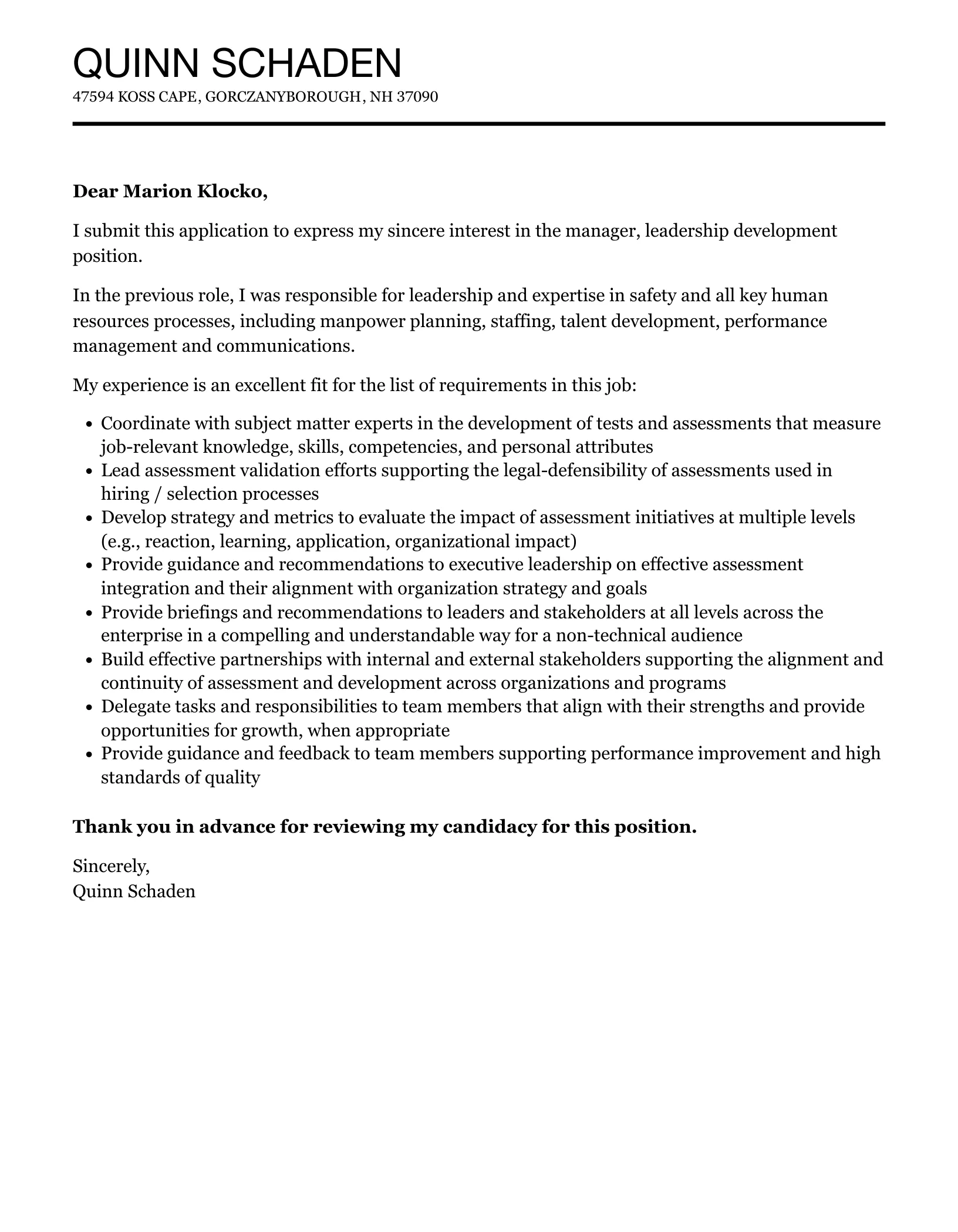
The structure of your cover letter plays a significant role in conveying your message effectively. A well-organized letter with a clear flow will capture the reader’s attention and make it easy for them to understand your qualifications and motivations. The structure should be logical, with each paragraph serving a specific purpose and contributing to the overall narrative. Keep it concise and focused, avoiding unnecessary jargon or lengthy explanations. A clear and concise structure allows you to highlight the most important information and make a lasting impression.
The Opening Paragraph Captivating the Reader
Your opening paragraph is your first and often only chance to grab the reader’s attention. Start with a compelling hook that immediately captures their interest. State the position you are applying for and briefly mention where you learned about the opportunity. Then, provide a brief overview of why you are the perfect candidate. Avoid generic openings and instead focus on expressing your genuine enthusiasm for the program and highlighting your most relevant qualifications. A strong opening will make the reader want to learn more, encouraging them to continue reading and consider your application carefully.
Body Paragraphs Showcasing Your Skills
The body paragraphs should delve deeper into your qualifications and experiences, providing specific examples to support your claims. Focus on the key skills and experiences that align with the program’s requirements. Use the STAR method (Situation, Task, Action, Result) to structure your examples, providing context, describing your role, detailing your actions, and quantifying the results. This approach allows you to demonstrate your skills in a clear and compelling manner. Showcase your leadership abilities, teamwork skills, problem-solving capabilities, and any other relevant strengths. Keep the paragraphs concise and focused, ensuring each one contributes to the overall narrative.
Closing Paragraph Making a Strong Impression
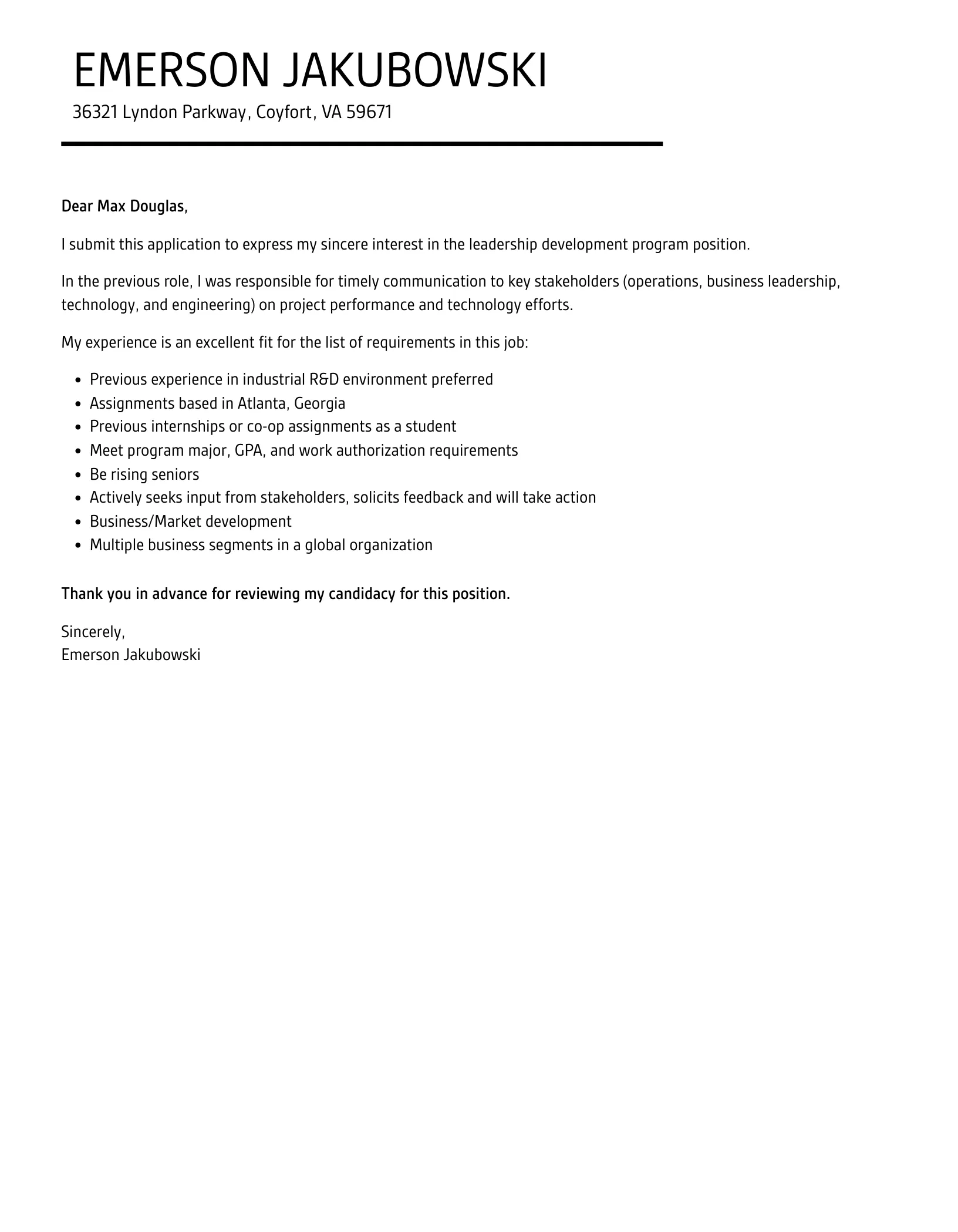
The closing paragraph should leave a lasting impression. Reiterate your interest in the program and summarize your key qualifications. Express your enthusiasm and reiterate why you are a good fit for the program. Thank the reader for their time and consideration, and clearly state your availability for an interview. Avoid generic closing statements and instead personalize your message to show that you genuinely desire the opportunity. A strong closing will reinforce your enthusiasm and make a memorable final impression, increasing your chances of securing an interview and ultimately, acceptance.
Essential Elements to Include in Your Cover Letter
There are some essential elements that should be included in every cover letter for a leadership development program. These elements help ensure your letter is comprehensive and effectively communicates your qualifications. By including these components, you demonstrate your understanding of the application process and increase the likelihood of making a positive impression.
Leadership Examples to Use
Provide clear examples of your leadership skills. Focus on experiences where you took initiative, motivated others, and achieved significant results. Use the STAR method to structure your examples, providing context, outlining your role, detailing your actions, and quantifying the results. Choose examples that align with the program’s values and highlight your strengths, such as strategic thinking, decision-making, or team management. By providing specific examples, you’ll demonstrate the impact of your leadership in past roles.
Specific Skills to Mention
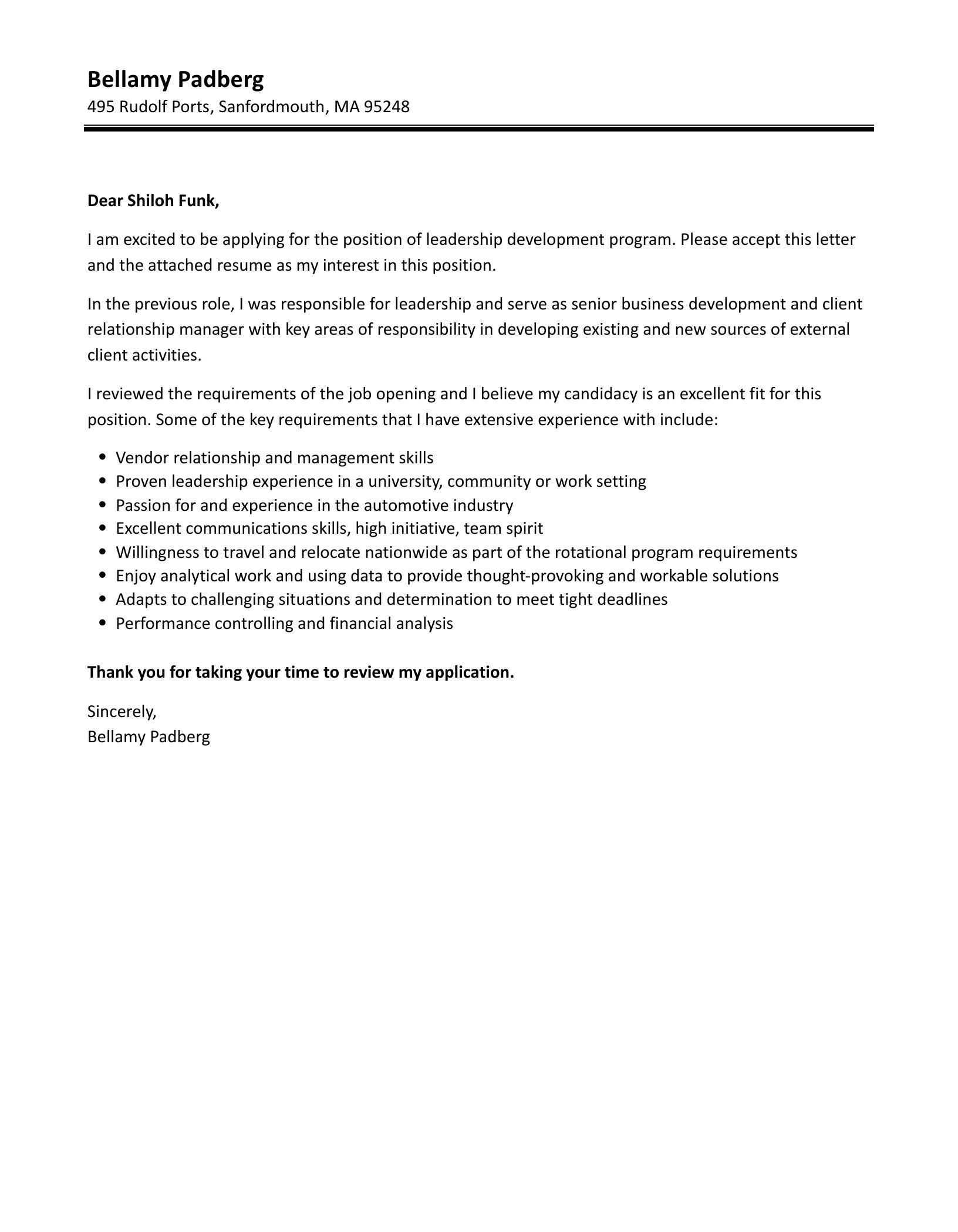
Identify the specific skills that the program values and highlight them in your cover letter. These may include communication, problem-solving, strategic thinking, or team management. Tailor your skills to match the program’s specific requirements. Providing examples of how you have used these skills in the past strengthens your claims and demonstrates your ability to succeed in a leadership role. This shows the selection committee that you possess the competencies necessary to thrive in their program.
Key Achievements and Accomplishments
Showcase your key achievements and accomplishments. Quantify your results whenever possible to demonstrate the impact of your leadership. Use numbers, percentages, and data to illustrate your achievements. Focus on the outcomes you have achieved in your previous roles or projects. This makes your accomplishments more credible and demonstrates that you can deliver results. Highlight these achievements to make your application stand out from the crowd.
Common Mistakes to Avoid
Avoiding common mistakes in your cover letter can dramatically improve your chances of being selected for a leadership development program. Simple errors can quickly lead to your application being rejected. By paying attention to these details, you can ensure your cover letter is as compelling as possible.
Generic Language and Lack of Personalization
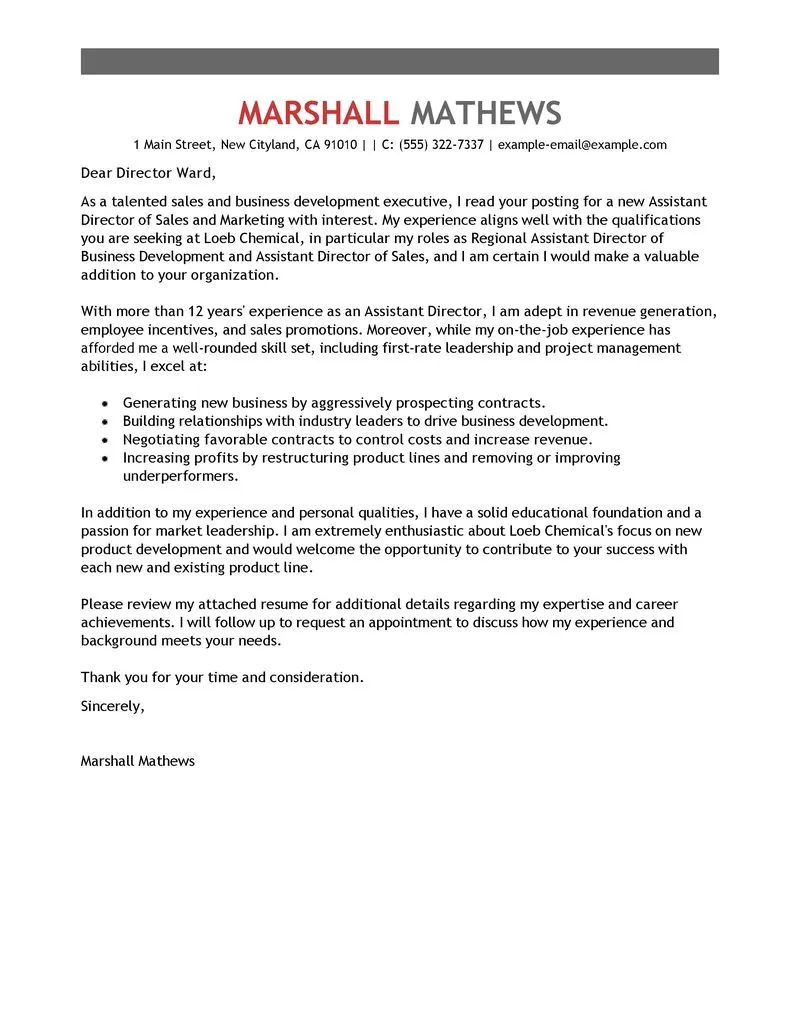
Avoid using generic language and failing to personalize your cover letter. A cover letter that could apply to any program signals a lack of genuine interest. Instead, show that you have researched the program, understand its goals, and genuinely want to participate. The more specific and personal your letter, the more likely you are to make a positive impression. Mention specific details from the program’s website or mission statement to illustrate that you have taken the time to understand it. Tailoring your cover letter shows your enthusiasm and commitment.
Ignoring the Program’s Requirements
Carefully review the program’s requirements and ensure your cover letter addresses them. Many programs have specific guidelines regarding the format, length, and content of the cover letter. Failing to follow these instructions demonstrates a lack of attention to detail and a lack of respect for the application process. Always check the requirements and make sure you have met them. Missing even a small detail can lead to your application being disqualified, so double-check everything before submitting your letter.
Typos and Grammatical Errors
Typos and grammatical errors can undermine your credibility and professionalism. Proofread your cover letter carefully, and if possible, have someone else review it. A polished cover letter demonstrates attention to detail and a commitment to excellence. Proofreading eliminates these distracting errors and makes it easier for the reader to focus on your qualifications and experiences. These errors create a negative impression and can make it harder for the selection committee to understand your message and appreciate your skills.
Formatting and Presentation Tips
Proper formatting and presentation are essential for creating a cover letter that is easy to read and visually appealing. It can significantly enhance your credibility and ensure that your message is effectively communicated. Pay attention to these details to make your cover letter as effective as possible.
Choosing the Right Font and Size
Select a professional and readable font, such as Times New Roman, Arial, or Calibri. Use a font size between 10 and 12 points for optimal readability. Ensure that the font is consistent throughout the document. Avoid using overly decorative or unusual fonts, as they can distract the reader. Choose a font that is clear, legible, and easy on the eyes. This makes your cover letter more accessible and professional, and demonstrates your attention to detail.
Formatting for Readability
Format your cover letter for readability. Use short paragraphs, bullet points, and plenty of white space to make it easy on the eyes. Avoid long blocks of text, which can discourage the reader. Consider using headings and subheadings to organize your content. This helps the reader quickly grasp the key points. Make your cover letter look inviting and easy to navigate. Formatting helps ensure your message is clear and makes the reader more likely to stay engaged.
Proofreading Your Cover Letter
Proofread your cover letter carefully for any errors in grammar, spelling, and punctuation. It’s helpful to have a second pair of eyes review your letter, as another person may catch errors that you miss. Typos can make you appear careless, which can undermine your credibility. A well-proofread cover letter shows that you pay attention to detail. This meticulous approach makes a positive impression, so be sure to proofread carefully, or have someone else do it for you.
Finalizing and Submitting Your Cover Letter
Once you have written and formatted your cover letter, carefully review it one last time before submitting it. Make sure all the information is accurate and that the letter is free of any errors. Ensure your contact information is correct and that you have followed all the instructions provided by the program. When submitting, follow the specified format (e.g., PDF) and any instructions for uploading your letter. Taking these final steps ensures that your application is complete and professional, increasing your chances of success. A well-crafted cover letter significantly increases your odds of acceptance into a leadership development program.
